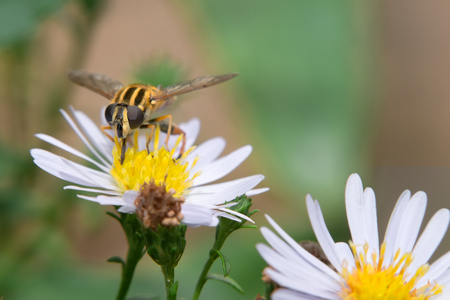1. Introduction to Beneficial Insects and IPM
Integrated Pest Management (IPM) is a smart and environmentally friendly way to manage pests in gardens, farms, and landscapes. Instead of relying heavily on chemical pesticides, IPM focuses on using a mix of tools and strategies that are safe and sustainable. One of the most important parts of this approach is encouraging beneficial insects—nature’s own pest control agents.
Beneficial insects are bugs that help keep harmful pest populations under control. They can be predators, parasites, or pollinators. By attracting and supporting these good bugs, gardeners and farmers can reduce the need for chemical sprays, which helps protect the environment, water sources, pets, and people.
What is Integrated Pest Management (IPM)?
IPM is all about using a balanced approach to control pests. This means combining biological controls (like beneficial insects), cultural practices (such as crop rotation), mechanical tools (like traps or barriers), and only using pesticides when absolutely necessary. The goal is to minimize harm to people, animals, and the ecosystem while keeping pests at bay.
The Role of Beneficial Insects in IPM
When you think about pest control, you might imagine spraying chemicals. But nature already has its own pest control system—beneficial insects! These natural predators feed on common garden pests such as aphids, caterpillars, mites, and more. By understanding which insects are helpful and how to attract them, you can build a strong defense against pests without harming the environment.
Types of Beneficial Insects
| Insect | Type | Main Targets |
|---|---|---|
| Lacewings | Predator | Aphids, mealybugs, thrips |
| Ladybugs (Lady beetles) | Predator | Aphids, scale insects, mites |
| Parasitic Wasps | Parasitoid | Caterpillars, whiteflies, beetle larvae |
| Hoverflies (Syrphid flies) | Predator & Pollinator | Aphids, thrips; also pollinate flowers |
| Spiders | Predator | Various flying and crawling pests |
| Ground Beetles | Predator | Caterpillars, slugs, root maggots |
By creating an inviting habitat for these insects—like planting native flowers or avoiding broad-spectrum insecticides—you can support their presence in your garden or farm. This not only helps with pest control but also boosts overall biodiversity.
2. Common Types of Beneficial Insects
In Integrated Pest Management (IPM), beneficial insects play a major role in keeping harmful pests under control without the need for excessive chemical use. Here are some of the most common and helpful natural predators found in American gardens and farms.
Lady Beetles (Ladybugs)
Lady beetles are perhaps the most recognized beneficial insect. Both adults and larvae feed on soft-bodied insects like aphids, mealybugs, and scale insects. They are especially useful in vegetable gardens, flower beds, and orchards.
Key Benefits:
- Consume large numbers of aphids daily
- Effective across various crops and garden plants
- Non-aggressive to humans and pets
Lacewings
Green lacewings are gentle-looking insects whose larvae are fierce predators. Often called “aphid lions,” lacewing larvae prey on aphids, thrips, whiteflies, and small caterpillars.
Key Benefits:
- Lacewing larvae can consume hundreds of pests during their development
- Easily attracted to gardens with flowering plants
- A great addition to vegetable gardens and greenhouses
Parasitic Wasps
These tiny wasps don’t sting humans but instead lay their eggs inside or on pest insects like caterpillars, aphids, and whiteflies. The developing wasp larvae eventually kill the host insect.
Key Benefits:
- Naturally reduce pest populations from the inside out
- Target specific pests without harming beneficial bugs
- Useful in both open fields and greenhouse settings
Predatory Mites
Unlike plant-feeding mites, predatory mites feed on pest mites such as spider mites and thrips. Theyre often used in greenhouses but also thrive in outdoor settings where humidity is sufficient.
Key Benefits:
- Quickly control mite outbreaks without chemicals
- Tiny but highly effective predators for leaf surfaces
- Sustainable option for long-term mite management
Comparison Table of Common Beneficial Insects
| Beneficial Insect | Main Prey | Main Use Areas | Description |
|---|---|---|---|
| Lady Beetles | Aphids, mealybugs, scale insects | Vegetable gardens, orchards, flower beds | Eats many pests per day; friendly to humans |
| Lacewings (larvae) | Aphids, thrips, caterpillars, whiteflies | Crops, flower beds, greenhouses | Aggressive predators during larval stage |
| Parasitic Wasps | Caterpillars, aphids, whiteflies (as hosts) | Crops, shrubs, greenhouses | Lays eggs inside pests; controls populations naturally |
| Predatory Mites | Pest mites (e.g., spider mites), thrips eggs | Greenhouses, humid outdoor areas | Tiny hunters that work well on foliage surfaces |
Selecting the right beneficial insects for your landscape depends on the types of pests youre trying to manage. These natural allies can make a big difference in maintaining a healthy garden ecosystem while reducing reliance on synthetic pesticides.
![]()
3. How to Attract and Support Beneficial Insects
Creating a welcoming environment for beneficial insects is a key part of successful Integrated Pest Management (IPM). These helpful bugs—like ladybugs, lacewings, parasitic wasps, and hoverflies—need food, shelter, and water to thrive. With a few simple strategies, you can make your garden or landscape more inviting to these natural allies.
Choose the Right Plants
Plant diversity is essential for attracting different types of beneficial insects. Many of them feed on nectar and pollen as adults, even if their larvae are predators. Include a variety of flowering plants that bloom at different times throughout the growing season to provide continuous food sources.
Recommended Plants for Beneficial Insects
| Plant Name | Attracts | Bloom Season |
|---|---|---|
| Dill | Lacewings, Hoverflies | Summer |
| Yarrow | Ladybugs, Parasitic Wasps | Spring to Fall |
| Alyssum | Hoverflies, Parasitic Wasps | Spring to Summer |
| Coneflower (Echinacea) | Bees, Predatory Beetles | Summer to Fall |
| Goldenrod | Lacewings, Wasps | Late Summer to Fall |
Create Shelter and Habitat Spaces
Beneficial insects need places to hide from predators and extreme weather. You can provide shelter by adding layers to your landscape. Use mulch, low-growing ground covers, hedgerows, and native grasses to offer hiding spots and overwintering habitat.
Shelter Ideas:
- Leave some leaf litter: It provides habitat for ground beetles and spiders.
- Add insect hotels: These are small structures filled with hollow stems or wood pieces that attract solitary bees and parasitic wasps.
- Avoid over-pruning: Let some areas grow naturally to support insect biodiversity.
Provide a Water Source
Just like birds and other wildlife, beneficial insects need water too. A shallow dish with pebbles or marbles can serve as a safe drinking spot. Place it near flowering plants but in a shaded area to prevent evaporation.
Tips for Creating an Insect-Friendly Water Source:
- Use shallow containers like plant saucers or lids.
- Add rocks or marbles so insects can land safely without drowning.
- Change the water regularly to avoid mosquitoes.
- Avoid using tap water treated with chlorine—rainwater is best!
By making intentional choices in your garden design—such as planting diverse flowers, offering shelter, and supplying clean water—youll build a thriving ecosystem where beneficial insects can do their job naturally and effectively.
4. Monitoring and Recognizing Beneficial Insect Activity
Keeping an eye on the insects in your garden or farm is a key part of Integrated Pest Management (IPM). By monitoring your space regularly, you can spot which bugs are helping and which ones are causing trouble. This helps you make smart decisions about pest control without immediately turning to chemicals.
Tips for Scouting Your Garden or Farm
To recognize beneficial insect activity, it’s important to know what to look for and how to track changes over time. Here are some helpful tips:
1. Scout Regularly
Walk through your garden or fields at least once a week during the growing season. Early mornings or late afternoons are great times since many insects are more active then.
2. Use a Hand Lens or Magnifying Glass
Many beneficial insects are small. A hand lens can help you see details like wing shapes, body segments, and color patterns that help identify them correctly.
3. Check Under Leaves and Around Flowers
Predators like lady beetles, lacewings, and parasitic wasps often hide under leaves or near blooms where pests gather.
4. Look for Signs of Predation or Parasitism
If you see aphids with small holes in them or caterpillars with white cocoons on their backs, that’s evidence of natural predators at work.
Tracking Impact on Pest Populations
Once youve identified beneficial insects, its time to measure their impact. Keeping simple records helps you understand trends and adjust your IPM plan if needed.
Use a Simple Observation Log
| Date | Location | Pests Observed | Beneficials Observed | Signs of Control (e.g., fewer pests, damaged pests) |
|---|---|---|---|---|
| June 10 | Tomato Patch | Aphids (moderate) | Ladybugs (many adults & larvae) | Aphid numbers decreasing |
| June 17 | Tomato Patch | Aphids (low) | Ladybugs still present | No new pest outbreaks |
Set Up Sticky Traps or Sweep Nets
You can use sticky traps or sweep nets to catch flying insects and better understand what’s living in your garden. These tools help monitor both pests and beneficials over time.
Common Beneficial Insects and Their Targets
| Beneficial Insect | Pest Targeted | Where to Spot Them |
|---|---|---|
| Lacewing Larvae | Aphids, thrips, whiteflies | On leaves near pest colonies |
| Lady Beetles (Adults & Larvae) | Aphids, mealybugs, scale insects | Crops with soft-bodied pests |
| Parasitic Wasps | Caterpillars, aphids, whiteflies | Nesting inside host insects or around flowers |
Encouraging Continued Beneficial Activity
If you notice helpful insects doing their job, avoid using broad-spectrum pesticides that could harm them. Instead, support their efforts by planting pollinator-friendly flowers and providing diverse plant habitats.
A Quick Checklist:
- [ ] Scout weekly during growing season
- [ ] Use a magnifying tool for ID accuracy
- [ ] Record observations in a logbook or app
- [ ] Identify signs of predation/parasitism on pests
- [ ] Avoid harmful sprays when beneficials are active
The more familiar you become with the insect life in your space, the better youll be at supporting natures pest control team!
5. Integrating Beneficial Insects into a Broader IPM Plan
Incorporating beneficial insects into an Integrated Pest Management (IPM) program takes more than just releasing ladybugs and hoping for the best. It involves timing, planning, and understanding how these natural predators work within your overall pest control strategy. Heres how to make beneficial insects an effective part of your IPM plan.
Timing is Everything
Introducing beneficial insects at the right time is crucial. You want them present before pest populations get out of control. Monitor your garden regularly for signs of pests and use that information to decide when to release predators or attract them naturally. For example, if aphids typically appear in early spring, consider planting flowers that attract lacewings a few weeks beforehand.
Compatibility with Organic Practices
Beneficial insects align well with organic gardening because they reduce the need for chemical pesticides. However, even organic-approved sprays can harm helpful bugs. Always check product labels and apply treatments in the early morning or late evening when pollinators and predators are less active.
| Pest Problem | Beneficial Insect | Best Introduction Time |
|---|---|---|
| Aphids | Lacewings, Ladybugs | Early Spring |
| Caterpillars | Parasitic Wasps | Mid to Late Spring |
| Spider Mites | Predatory Mites | Early Summer |
Creating a Habitat for Helpers
You can encourage beneficial insects to stay by giving them a reason not to leave. Provide food, water, shelter, and places to reproduce. Planting nectar-rich flowers like dill, fennel, yarrow, and cosmos can support adult predators like hoverflies and parasitic wasps. A small shallow dish with pebbles and water also helps keep them hydrated.
Simple Ways to Attract Beneficial Insects:
- Avoid broad-spectrum pesticides
- Diversify your plantings to offer continuous blooms
- Add mulch or ground cover for shelter
- Create insect hotels using bamboo, straw, or wood blocks with holes
Sustained Pest Control Over Time
The goal of using beneficial insects isnt immediate results—its long-term balance. By consistently supporting predator populations season after season, youll notice fewer outbreaks and a healthier garden ecosystem overall. Keep records of what works each year so you can fine-tune your approach over time.


